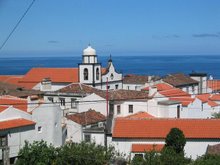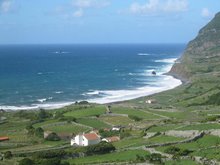First, Macbeth. We're all familiar with the Shakespeare play but how much of it is true - if anything?
Well, the first thing is that Macbeth did actually exist. He was the king of Alba (Scotland) from 1040 to 1057. Macbeth was his first name (quite a common name in 11th century Scotland) so the notion of his wife being called "Lady Macbeth" is a nonsense. Her name was Gruoch, as it happens.
He did come to the throne following the death of a King Duncan (1034-1040) but not as a result of the murder of an octogenarian dinner party guest as the Bard of Avon would have us believe. Duncan - who was in his 30s at the time - was killed in battle with Macbeth's forces but that was par for the course in 11th century Scotland, in fact de rigueur: a coronation just wasn't a coronation in these days unless accompanied by the severed heads of the outgoing administration.
Shakespeare was right about Macbeth being the Thane of Cawdor in as much that Cawdor is a place near Inverness in Moray and Macbeth was indeed from Moray. Below is Cawdor Castle but, of course, none of these buildings date as far back as the 11th century when Macbeth was around.
Picture credit - youngrobv (Rob & Ale)'s
In previous episodes of History of Scotland, I've alluded to the fact that, in the Dark Ages (pre-1000AD), Moray had a very ambivalent relationship with Alba (Scotland) so Macbeth, as a Moravian who ruled Alba, has some claim to be the first king of all Scotland.
A reign of 17 years was long by the standards of the 11th century and Macbeth went on a pilgrimage to Rome during his reign. Going to Rome would have taken months if not years in these days (especially if you go on British Airways) so Macbeth was obviously sure enough of the stability of his regime to be able to turn his back for that long. So clearly, he had a tip-top human resources department and had carried out all the necessary risk assessments and stress tests - "Oi! MacDuff! You might be the Thane of Fife but I say NO!" (That's a Harry Enfield gag.)
And what about Birnam Wood coming to Dunsinane? Well, once again, these two do actually exist. They're both in Perthshire, about 15 miles from each other in the heart of what would have been 11th century Alba. Dunsinane - which is locally pronounced "Dun-SIN-an" rather than "Dun-sin-ANE" as the play would have you believe - even has the remains of a Dark Ages fort on it suggesting a fitting location for Macbeth's last stand.
I remember my English teacher at school saying "Now boys and girls, I want you to imagine how frightened Macbeth is to see a wood moving towards his castle, not realising that Malcolm has told his troops to disguise themselves with branches." and I was like "Yeah, right! I can see how that would put the wind up anybody."
That's what's so interesting about history - it keeps repeating itself. I can just see the Chief of the Defence Staff, Sir Jock Stirrup, saying "Scratch the expensive Darth Vader kit, chaps. Just bung a stick in your helmet and the choggies won't know what's hit 'em and we'll all be in Lashgar-Gah before you can you can say "Wootton Bassett"".
(BTW - am I the only one who bursts out laughing EVERY TIME I hear the name Jock Stirrup? Especially considering his name is not actually Jock (or John) but - wait for it - Graham.)








3 comments:
Hey, where's Burnham Wood on the map?
Personally, I favor Verdi's version of the tale. It couldn't have been all THAT difficult for 11th-century Scots to learn 19th-century Italian, right? ;-)))
"Birnam Wood"
Clearly I should not be allowed to post on blogs so late at night! Mea culpa.
Before you go bashing Shakespeare for being 'historically inaccurate' you should remember that Macbeth was written as a Tragedy, not a History. It was meant to be a tribute to King James' ancestry and his fascination with witchcraft. It wasn't supposed to be historically accurate, it's meant to be a moving piece of drama loosely based on historical figures.
Post a Comment